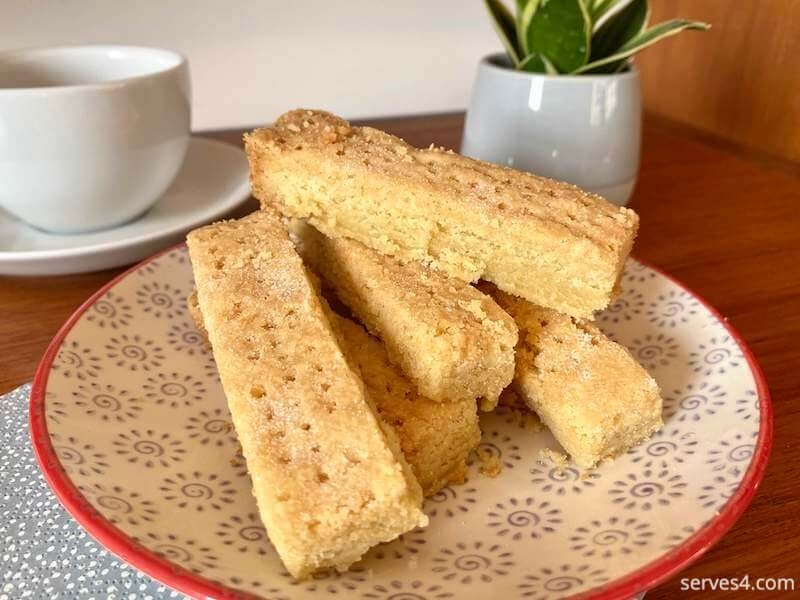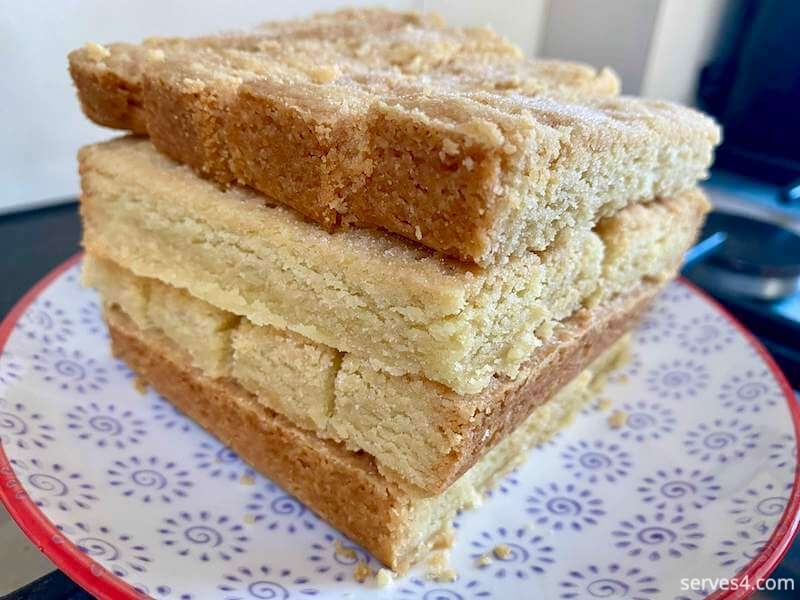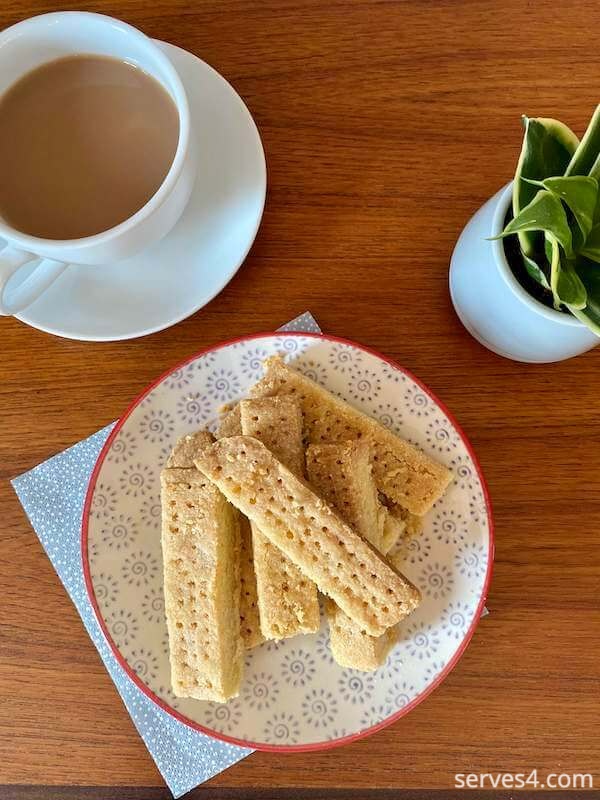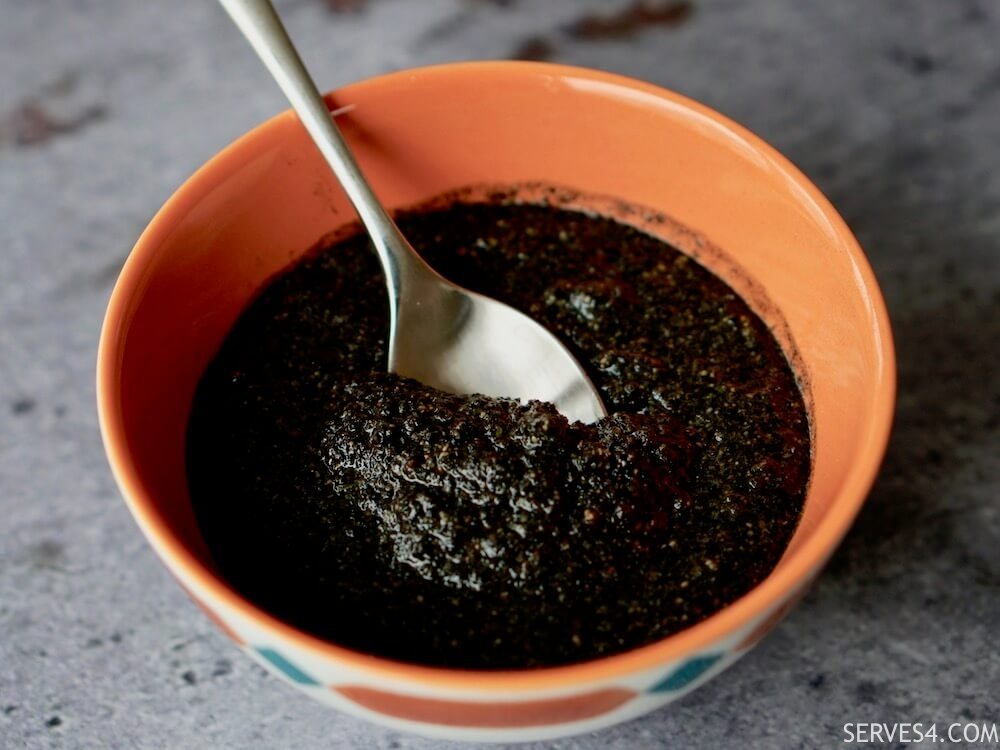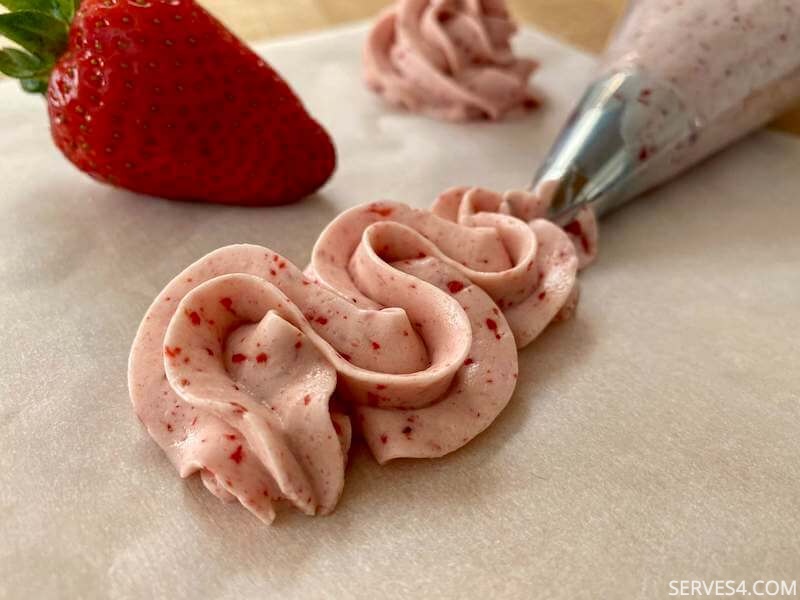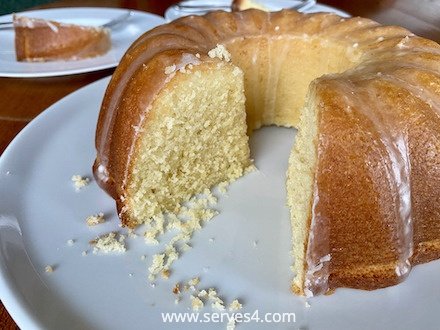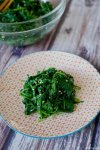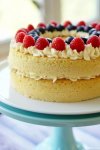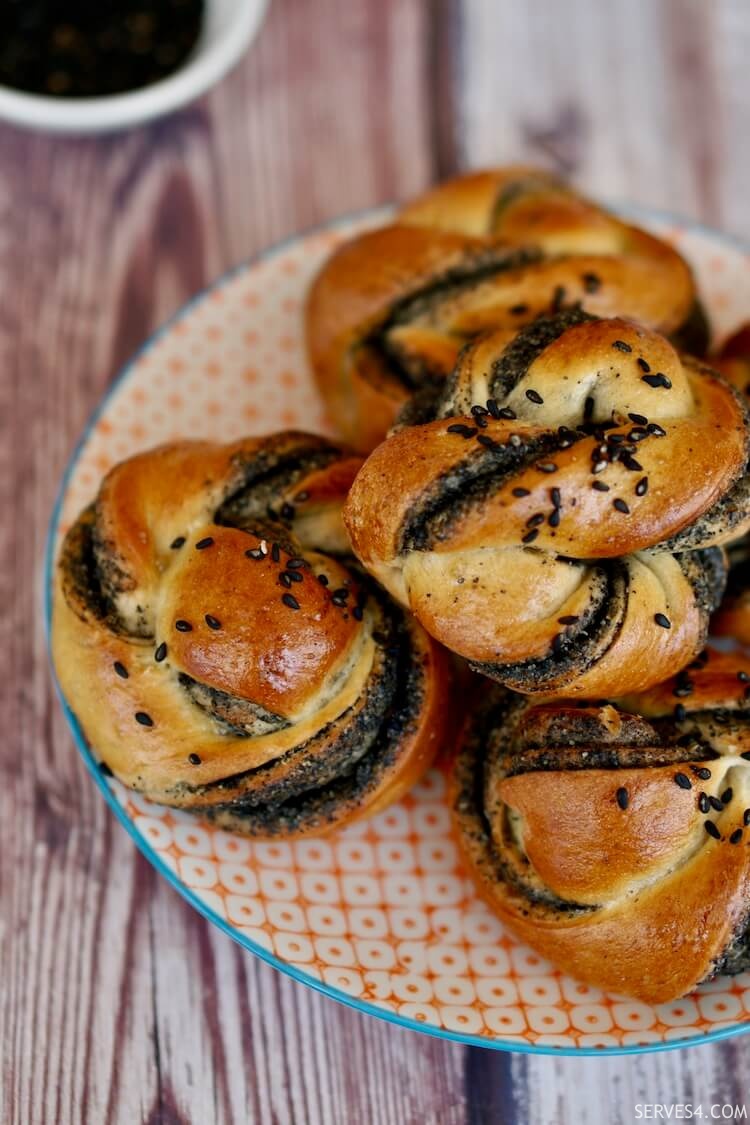- Serves 4
- Baking and Desserts
- Shortbread
How to Make Shortbread
This page may contain affiliate links, which means we receive a small commission for purchases made using the links. There is no additional cost to you. Please read our full disclosure policy.
If you've ever wondered how to make shortbread -- maybe someone gifted you a tin, or maybe you've tasted it somewhere along your travels; either way, you've fallen in love with its addictive buttery deliciousness -- then you've come to the right place!
Making shortbread is actually really easy to do, requiring only a handful of ingredients, and it might even become your go to recipe when you're craving an afternoon tea treat.
Shortbread originated in Scotland and is derived from medieval 'biscuit bread,' a sweetened, hard and dry biscuit called a rusk. It was refined and became shortbread, as we know it, thanks to Mary, Queen of Scots, and is so called for its crumbly or 'short' texture (as opposed to stretchy or 'long').
Shortbread was traditionally served in wedge shapes (petticoat tails), rounds or thick rectangular bricks (fingers) with holes poked into the top.
Opinions differ on how to make shortbread, with some recipes using cornflour, rice flour or even semolina flour, in additional to plain wheat flour. Traditional Scottish shortbread doesn't use any other flour besides plain flour, but feel free to experiment, as the addition of each different type of flour will yield a slightly different texture of shortbread.
I add a bit of cornflour in the recipe below, as I like lightness of texture it gives the shortbread. (Although I use only plain flour when I'm rolling the dough thin to cut out biscuit shapes - just personal preference!). You can mix and match to see which texture you like best for which shape.
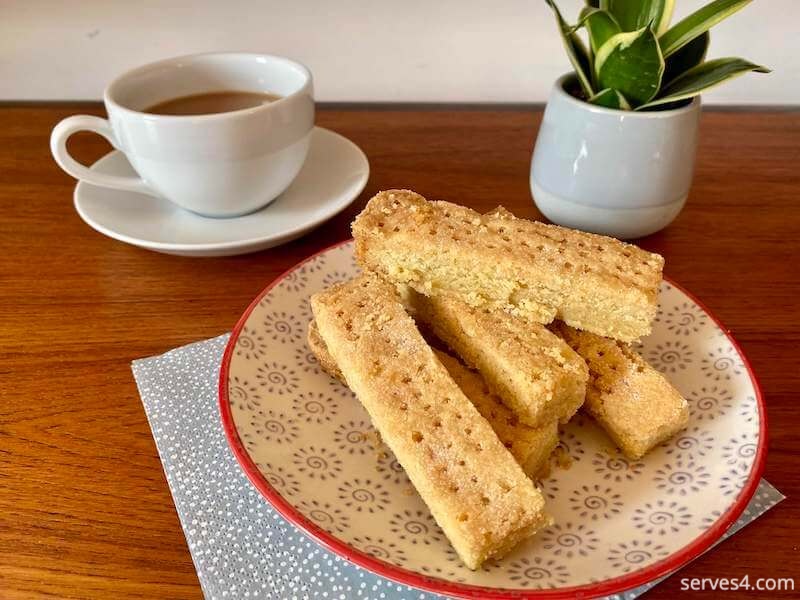
It's important to use the best quality butter you can - and make sure it's salted - as so much of the flavour of shortbread comes from the butter. The salt brings out the flavours and balances the sweetness of the sugar. If you can't get salted butter, then make sure you add a good pinch of salt (~1/2tsp, adjust to taste) to the dough when mixing it.
Shortbread will keep in an airtight container for up to a week (if it even lasts that long!), and I find the texture actually improves with time.
If you prefer eating shortbread in biscuit or cookie shapes, have a look at how to make shortbread cookies - this is also a fun and easy bake to do with children. ☺️
For more shortbread recipes, have a look at my recipe for black sesame cookies, buttery and nutty in one delicious mouthful!
Here's how to make shortbread with just four basic ingredients:
(Click here to jump straight to the recipe)
200g salted butter, softened, plus extra for greasing
240g plain flour
100g caster sugar, plus extra for dusting
40g cornflour (corn starch)
And here's what you'll need to do:
- Take the butter out of the fridge, and let it warm up to room temperature. Cutting it into smaller pieces will allow it to soften more quickly.
- Meanwhile, grease a 20cm (8in) square pan with butter, and line it with baking parchment. Preheat the oven to 170C (340F) / 150C Fan.
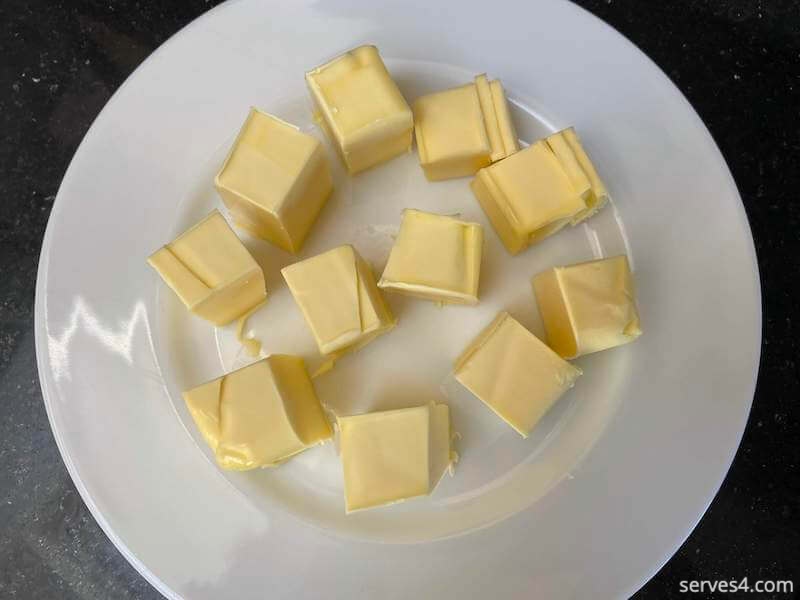
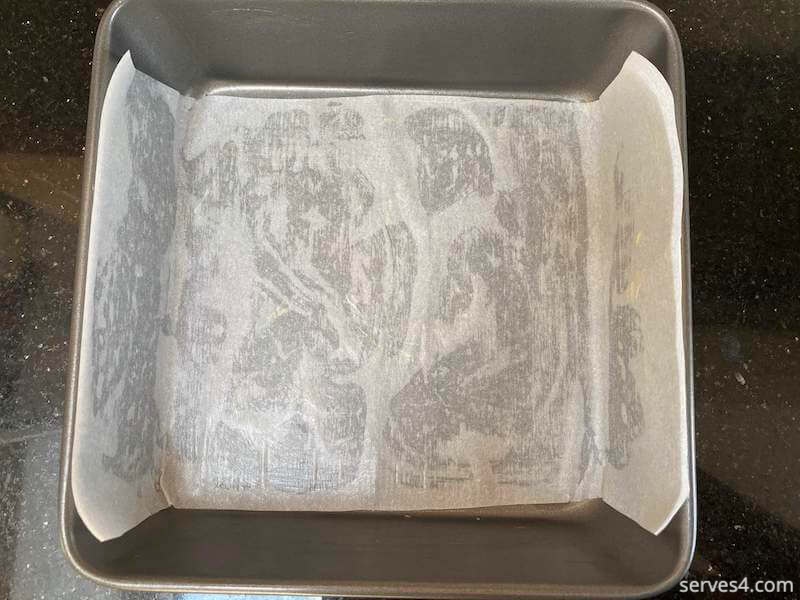
- Cream the butter and sugar together in a large mixing bowl, using a wooden spoon. This should be quite easily done if the butter is properly softened.
- Add the flours, and incorporate them into the butter mixture using the wooden spoon, or cut it through using a butter knife, until it resemble breadcrumbs.
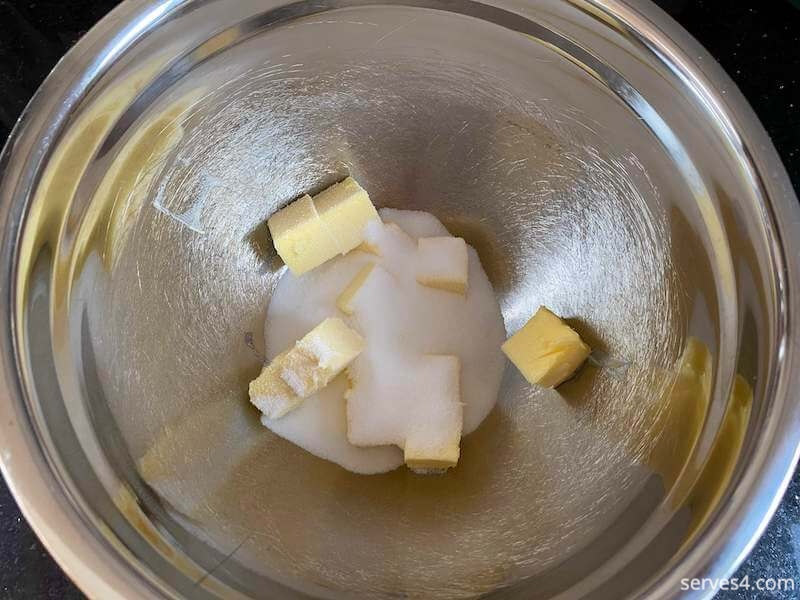
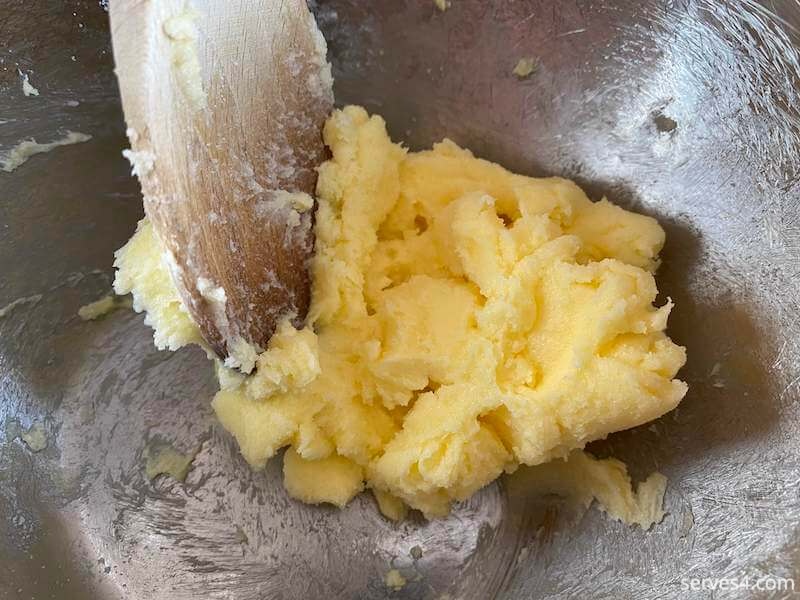
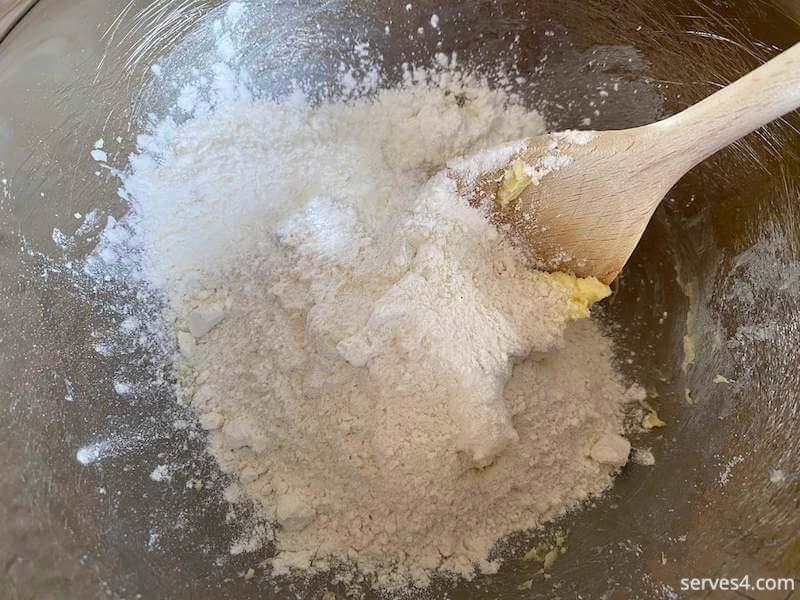
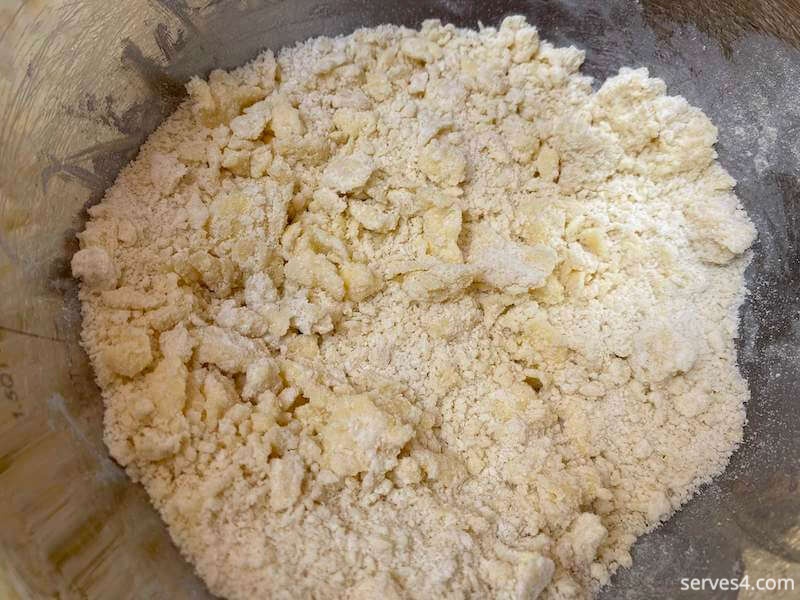
- If you are using a food processor, put everything into the bowl, and pulse together a few times until the mixture resembles breadcrumbs.
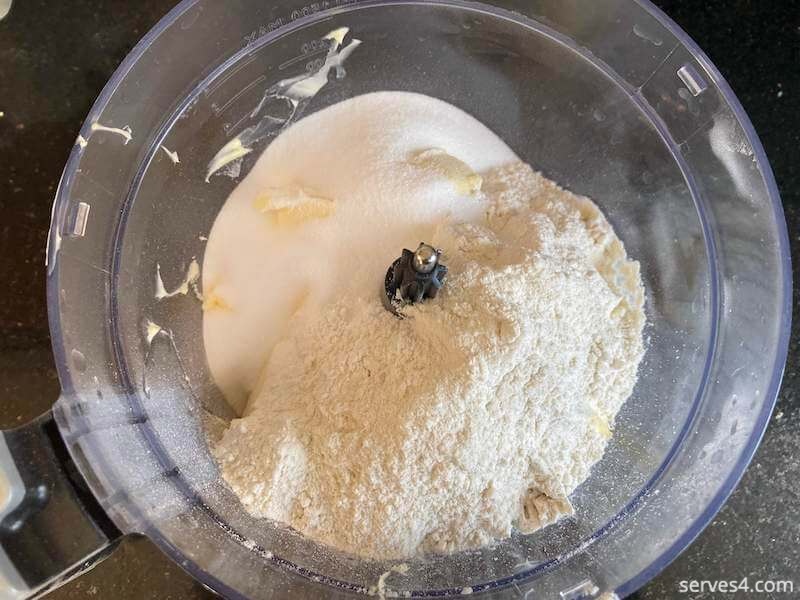
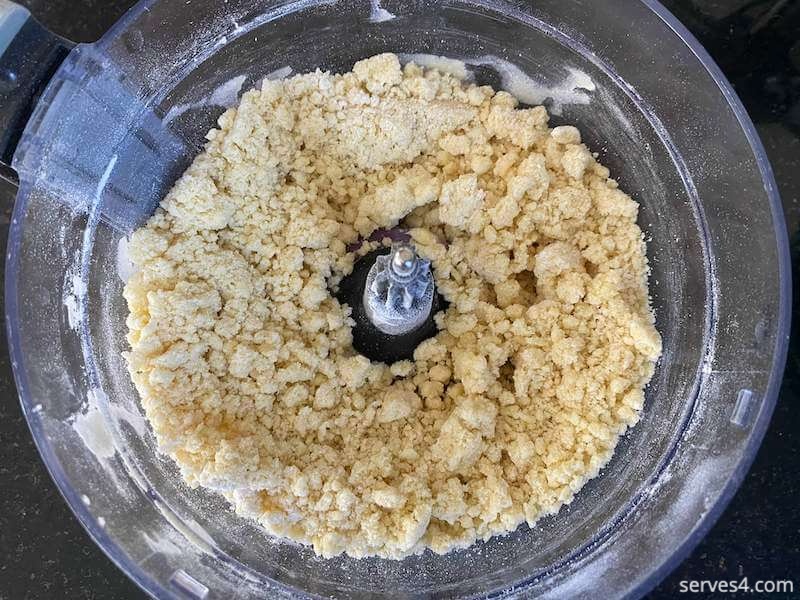
- Then use your hands to bring the dough together, kneading gently until smooth.
- Press the dough into the prepared pan - you can roll it flatter first, if you prefer - making sure to push it into the corners and edges. Lay a small piece of baking parchment on top of the dough, and smooth with your fingers or a soft spatula to achieve an even finish.
- You can either score the dough and poke decorative holes now, or after baking, while the shortbread is still warm. Note that the lines and holes may close up a bit during baking, as the dough will expand slightly.
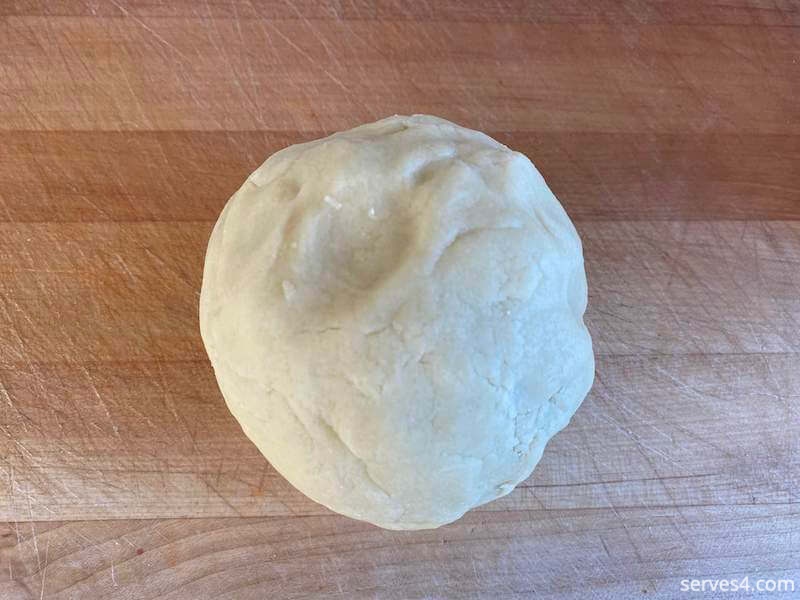
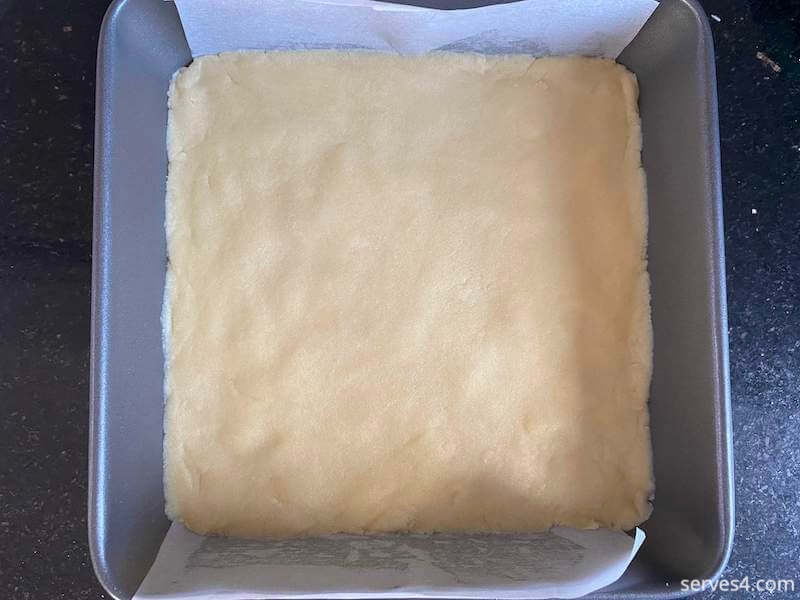
- Bake in the preheated oven for about 30-35 minutes, until pale golden in colour. Remove from the oven when done, and cool slightly.
- I like to score and cut my shortbread directly in the pan, while still warm, using an icing smoother or dough/bench scraper, and then poke decorative holes into the top using a fork or cocktail stick (toothpick). You'll get 16 shortbread fingers from this recipe.
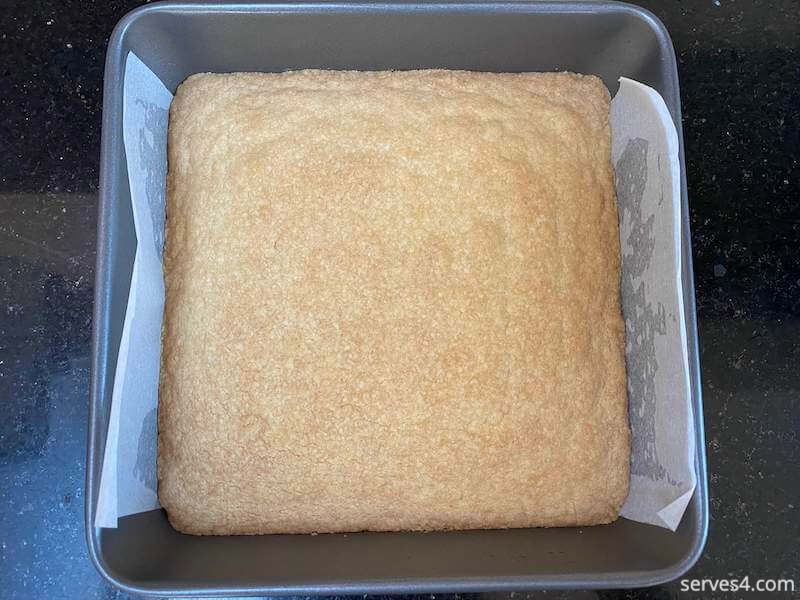
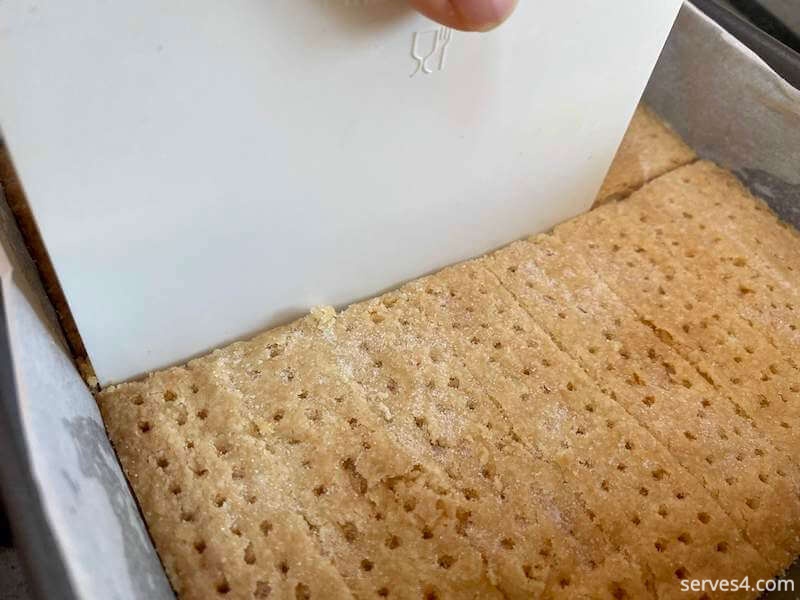
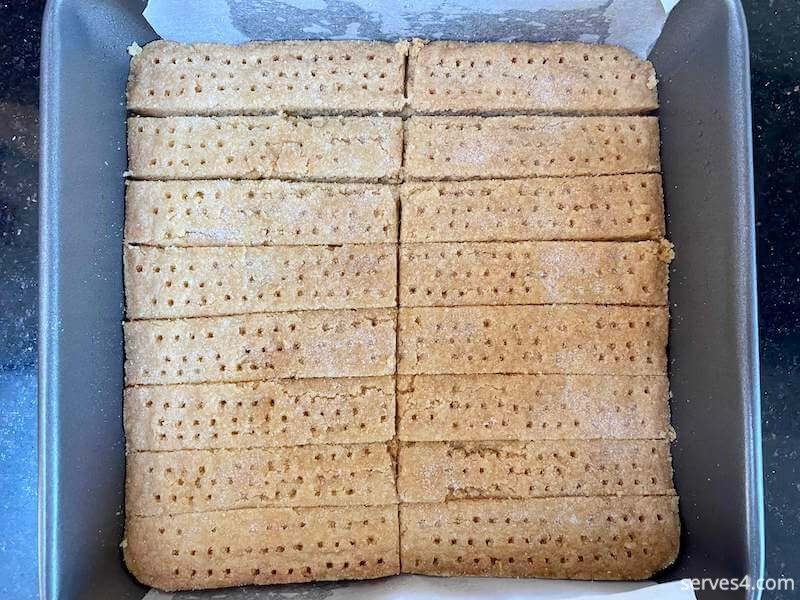
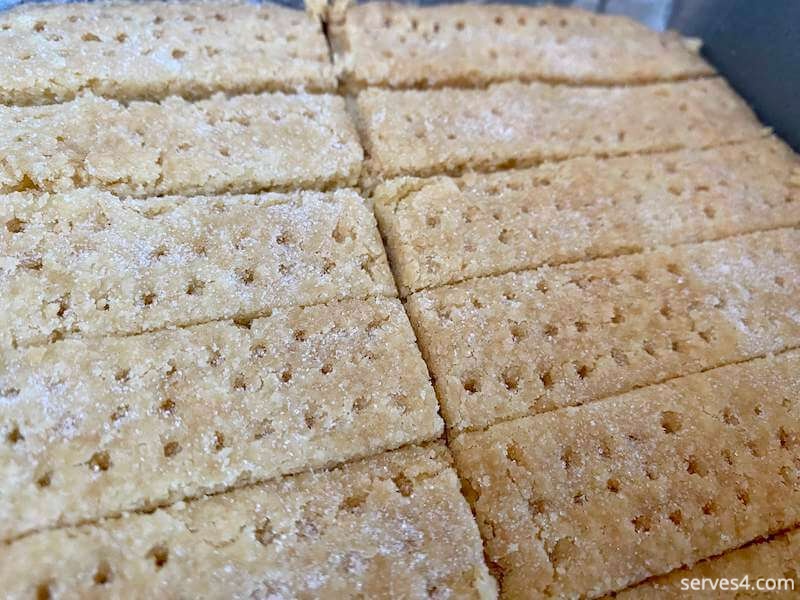
- Cool completely in the pan before lifting the shortbread out by the parchment and serving.
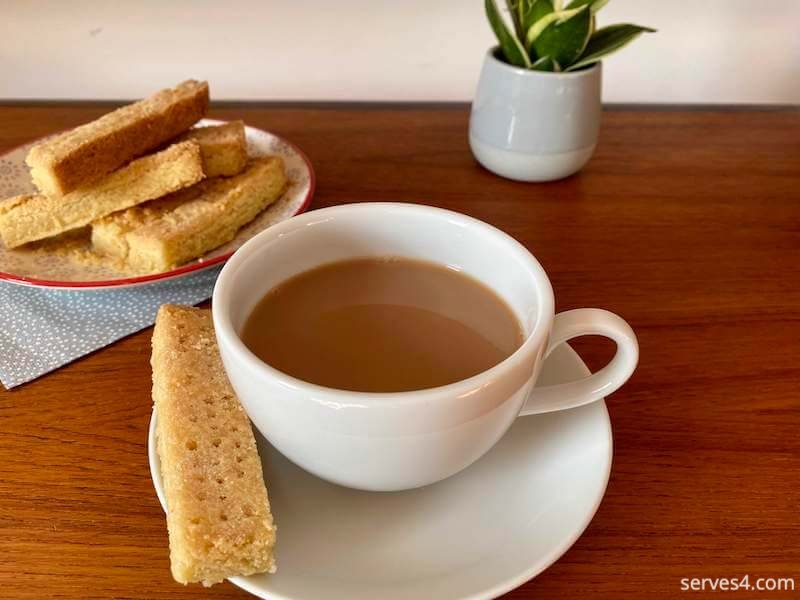
How to Make Shortbread
By Wendy | Serves 4
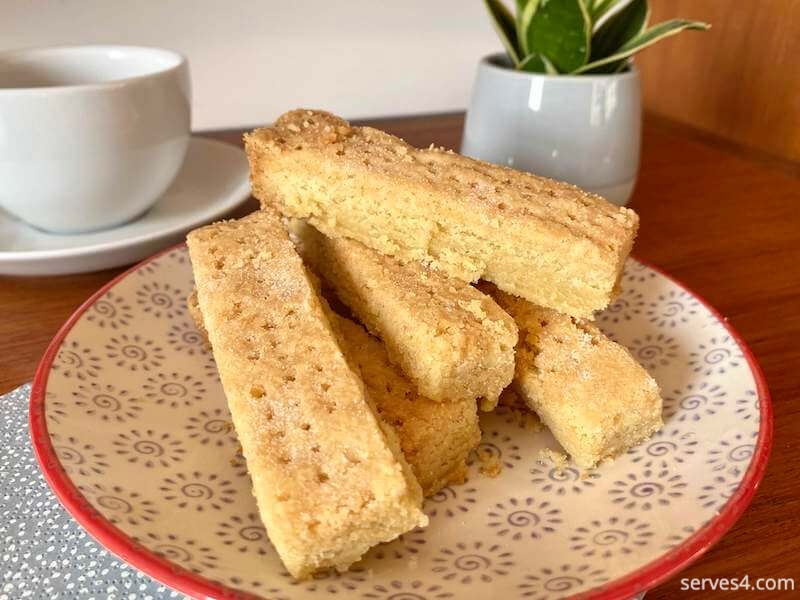
Learn how to make shortbread with this delicious and super easy recipe.
Prep Time: 15 minutes
Cook time: 30 minutes
Yield: 16 fingers
Course: Snack, Treat
Cuisine: Modern European, Scottish
Tags: Scottish, Shortbread Fingers
Ingredients
200g salted butter, softened, plus extra for greasing240g plain flour
100g caster sugar, plus extra for dusting
40g cornflour (corn starch)
Method
- Take the butter out of the fridge, and let it warm up to room temperature. Cutting it into smaller pieces will allow it to soften more quickly.
- Meanwhile, grease a 20cm (8in) square pan with butter, and line it with baking parchment. Preheat the oven to 170C (340F) / 150C Fan.
- Cream the butter and sugar together in a large mixing bowl, using a wooden spoon. This should be quite easily done if the butter is properly softened.
- Add the flours, and incorporate them into the butter mixture using the wooden spoon, or cut it through using a butter knife, until it resemble breadcrumbs.
- If you are using a food processor, put everything into the bowl, and pulse together a few times until the mixture resembles breadcrumbs.
- Then use your hands to bring the dough together, kneading gently until smooth.
- Press the dough into the prepared pan - you can roll it flatter first, if you prefer - making sure to push it into the corners and edges. Lay a small piece of baking parchment on top of the dough, and smooth with your fingers or a soft spatula to achieve an even finish.
- You can either score the dough and poke decorative holes now, or after baking, while the shortbread is still warm. Note that the lines and holes may close up a bit during baking, as the dough will expand slightly.
- Bake in the preheated oven for about 30-35 minutes, until pale golden in colour. Remove from the oven when done, and cool slightly.
- I like to score and cut my shortbread directly in the pan, while still warm, using an icing smoother or dough/bench scraper, and then poke decorative holes into the top using a fork or cocktail stick (toothpick). You'll get 16 shortbread fingers from this recipe.
- Cool completely in the pan before lifting the shortbread out by the parchment and serving.
What's on your mind?
Let us know any thoughts, comments or questions by getting in touch here.
Back to the Top!

